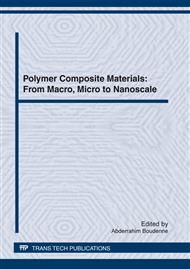p.229
p.237
p.245
p.255
p.263
p.271
p.277
p.283
p.291
In Vitro Drug Release Activity from Core/Shell Electrospun MATS of sPLA-cPEG/GS and sPLA/CA-cPEG/GS
Abstract:
In this research, the core-shell structured fiber was fabricated by coaxial electrospinning technique. A set of biodegradable polymers namely polylactic acid (PLA) and cellulose acetate (CA) were used as the shell material. Gentamicin sulfate (GS) as antimicrobial drug with polyethylene glycol (PEG) was used as the core structure. PEG formed the core section of the coreshell fibers for GS encapsulation. In-vitro drug release activity of the core-shell fibers was determined by total immersion method in pH 7.4 phosphate buffer solutions (PBS). It was found that core-shell fibers sPLA-cPEG/GS exhibit higher initial release compared to that of core-shell fibers sPLA/CA-cPEG/GS.
Info:
Periodical:
Pages:
263-270
Citation:
Online since:
March 2012
Keywords:
Price:
Сopyright:
© 2012 Trans Tech Publications Ltd. All Rights Reserved
Share:
Citation:


